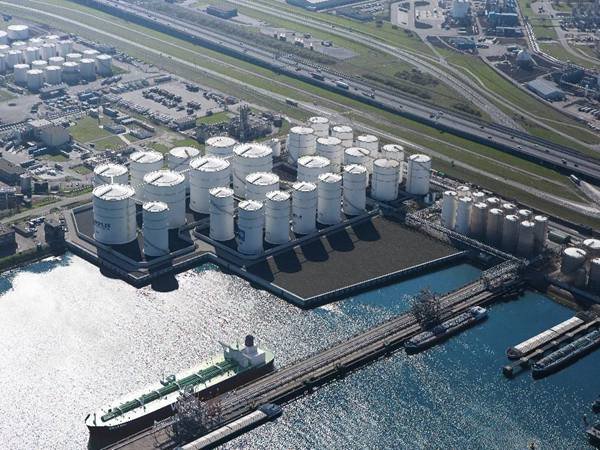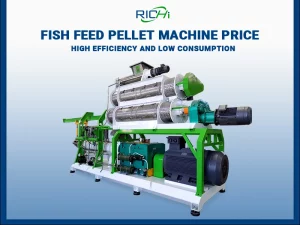Factors Affecting the Fish Feed Mill Plant Cost
Setting up a fish feed mill plant requires careful consideration of various factors that directly or indirectly affect the cost. The cost of establishing a fish feed mill plant can vary significantly based on several variables, such as technology, raw materials, labor, market conditions, government policies, and economic factors.

Each of these elements plays a crucial role in determining the overall cost and profitability of the venture. This article aims to explore these factors and highlight their importance in analyzing the fish feed mill plant cost.
Factors Influencing Fish Feed Mill Plant Cost
Several factors influence the cost of setting up a fish feed mill plant.
- The scale of the plant, machinery and equipment, land and building, and utilities are among the key determinants.
- For instance, a larger plant with more advanced technology will require a substantial capital investment compared to a smaller, less sophisticated one.
- Similarly, the location and availability of utilities such as electricity, water, and transportation infrastructure can significantly impact the overall cost.
Importance of Quality in Fish Feed Mill Plant Cost
Ensuring high-quality fish feed production is crucial for the success of a feed mill plant. Quality directly affects the overall cost of production, as low-quality feed may result in reduced growth rates, poor feed conversion ratios, and increased mortality among fish.
Consequently, investing in quality control systems, sourcing premium raw materials, and maintaining strict adherence to formulation standards becomes imperative. Though it may increase the initial cost, the long-term benefits, such as improved fish health and growth, outweigh the expenses.
Impact of Technology on Fish Feed Mill Plant Cost
Technology plays a significant role in determining the cost of establishing a fish feed mill plant. Technological advancements in the manufacturing process can increase efficiency, reduce energy consumption, and minimize waste generation.
However, incorporating advanced technology requires a higher initial investment. Automation, computerized process control systems, and modern pelletizing equipment contribute to improved production, better feed quality, and increased profitability. Hence, the cost of technology should be considered in view of the long-term benefits it offers.
Role of Raw Materials in Fish Feed Mill Plant Cost
Raw materials, such as fishmeal, fish oil, grains, and other ingredients, constitute a substantial portion of the overall fish feed mill plant cost. Availability, quality, and cost fluctuations of raw materials significantly impact the production costs.
Ensuring a reliable supply chain and exploring alternative ingredients can help mitigate the risks associated with raw material price volatility. Moreover, investing in feed formulation research and development can optimize ingredient usage and reduce costs while maintaining nutritional quality.
Labor and Operating Costs in Fish Feed Mill Plant
Labor and operating costs contribute significantly to the overall expenditure of a fish feed mill plant. Skilled labor, including nutritionists, feed mill operators, quality control personnel, and maintenance staff, are essential for smooth operations and high-quality feed production. Wages, training, and employee benefits are factors to consider when estimating labor costs.
Additionally, energy expenses, maintenance and repair, waste disposal, and regulatory compliance costs must be accounted for to accurately assess the operating costs.
Related post: https://richipelletizer.com/fish-feed-mill-plant-cost/
Market Conditions and Fish Feed Mill Plant Cost
Market conditions, such as fish feed demand, competition, and pricing, directly impact the cost of establishing and operating a feed mill plant. An in-depth analysis of the market, including target customers, competitor strategies, and regional demand, is crucial to determine the feasibility and profitability of the venture.
Market research helps identify potential risks, market trends, and consumer preferences, which are essential in making informed decisions and estimating costs accurately.
Government Policies and Fish Feed Mill Plant Cost
Government policies and regulations significantly influence the cost of setting up and operating a fish feed mill plant. Licensing requirements, environmental regulations, and food safety standards must be adhered to, often resulting in additional costs for compliance.
Moreover, incentives, subsidies, and tax breaks offered by the government can help mitigate some of the expenses associated with the establishment of a fish feed mill plant. Therefore, being aware of and evaluating the impact of government policies is crucial to understanding the cost implications.
Economic Factors Affecting Fish Feed Mill Plant Cost
Economic factors, such as inflation, exchange rates, interest rates, and the overall economic stability of the region, can have a direct impact on the cost of establishing and operating a pellet line.
Fluctuations in these factors can affect the prices of raw materials, equipment, and labor, consequently influencing the overall cost structure. It is essential to consider these economic variables and conduct a thorough cost-benefit analysis to ensure the financial viability of the project.
Analyzing Fish Feed Mill Plant Cost Factors
Analyzing the factors that influence the cost of a fish feed mill plant is crucial for prudent decision-making and successful business operations. Quality control, technological advancements, raw material sourcing, labor and operating costs, market conditions, government policies, and economic factors all play a pivotal role in determining the overall cost structure.
By carefully evaluating each factor and understanding its implications, fish feed mill plant owners can make informed choices, optimize costs, and maximize profitability in this dynamic industry.

